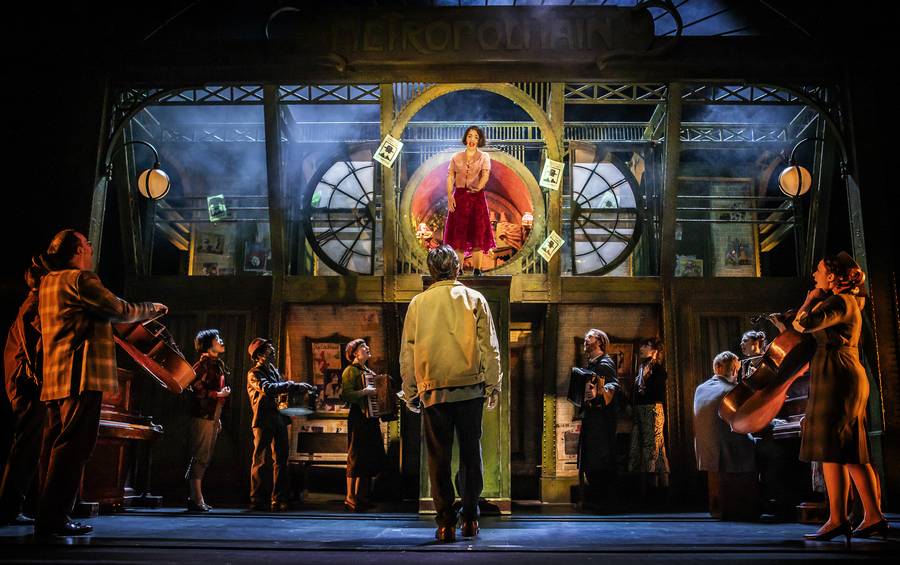
For those that have seen and loved Jean-Pierre Jeunet’s film Amélie, released in 2001, director Michael Fentiman’s contemporary staged musical adaptation simply had to capture the charm of the original narrative, and, of course, the mercurial, shy but impish personality of its heroine, if it were to succeed. The answer was clear to see at the final curtain – a house on its feet roaring its approval.
Against a lovingly-detailed set that evoked the Paris Metro, with its deco panelling and art nouveau lettering, and warmed by Elliot Griggs’ deliciously sympathetic lighting, we were instantly thrown into the noisy French capital. Audrey Brisson immediately stood out as the naïve, enigmatic Amélie. She bore considerable resemblance to the film’s Audrey Tautou, in a performance that retained the film’s characterisation but with additional Piaf-like chanteuse qualities.
We relive Amélie’s childhood in which she loses her mother to a freak occurrence, and her now emotionally withdrawn doctor father believes his young daughter (portrayed by one of Dik Downey’s engaging puppets) has a heart disorder. As a result, our young heroine is brought up as a virtual recluse, living in her own fantasy world with few friends of her own (‘Nothing’s Changed’), until she gets a job at the Café des Deux Moulins and eventually meets the attractive but oddball Nino, played with a sultry reserve by Danny Mac of Strictly Come Dancing fame, who collects photobooth pictures from all over the city,
When Amélie discovers an old box of memorabilia in her little circular flat, here perched above the edifice of the Metro, she sets out to return it to its owner. The effects of this little act of anonymous kindness defines the rest of the narrative. Amélie has found a reason to be. In a wonderfully surreal sequence, during the broadcast of Princess Diana’s funeral, she reaches into the screen of her TV for Princess Diana’s tiara. As she crowns herself a new queen for good deeds, Caolan McCarthy as Elton John sings ‘Goodbye, Amélie’ with perfect intonation, in a rousing end to the first half.
Later Amélie will help her withdrawn father find new wings by means of his much-loved garden gnome (There’s No Place Like Gnome); use gaslight techniques on an unkind grocer in a memorable scene involving figs (Collignon’s Nightmare); enriches the life of a blind beggar with vivid descriptions of the streets he is passing; and is instrumental in firing up a relationship between her co-worker Georgette and a customer in the bar. Despite these vicarious acts of good will, Amélie has yet to find expression for her own feelings. But egged on by the old artist Dufayel (Johnson Willis), she embarks on one final eccentric wheeze that finally seals her happiness.
A better cast of actor/musicians I challenge you to find anywhere. Playing two guitars, two cellos, a double bass, two accordions, two upright pianos, a flute and mobile percussive instruments, they gave Danial Messé’s score, sometimes a little unvaried across the whole evening, plenty of brio. It was a collective triumph musically, but Kate Robson-Stuart occasionally stole the stage as the vivacious violin-playing Suzanne.
Amélie the Musical seeks to plough a different furrow from most other musicals in that its central story is quiet, reflective. The story plays out with whimsy, sometimes with surreal detail, to give us a sense of Amélie’s shy, nervous but ultimately indomitable spirit (Stay). Amélie and Nino’s romance might take a while to finally charge, but this is a charming, memorable and beautifully crafted performance every bit as magical as the film but with its own spells to beguile new audiences. ★★★★★ Simon Bishop 17th July 2019
Photo by Pamela Raith

